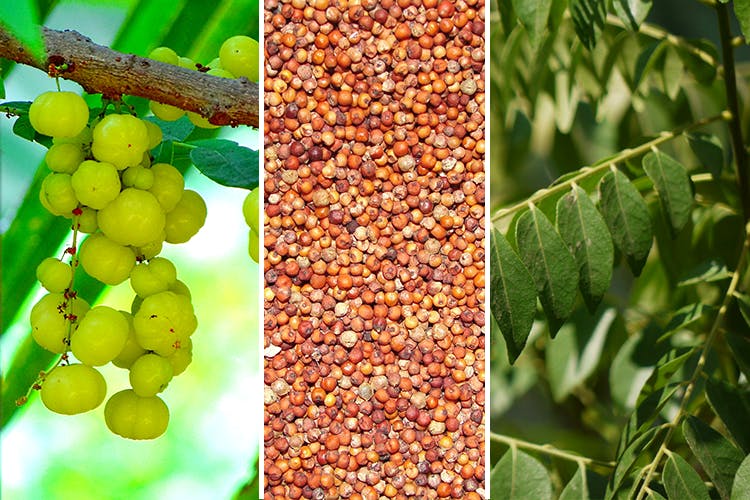Super foods is a term most of us have come across, but most likely in association with exotic ingredients like kale, quinoa, goji berries, rather than kadipatta {curry leaves}, ragi {finger millet}, or amla {Indian gooseberry}. In India, we have a vast forgotten repertoire of foods that provide health benefits beyond basic nutrition thanks to certain naturally present physiologically active components. These strengthen, prevent disease, and enhance health. Indian Culinary culture has a vast repertoire of undiscovered super foods.
Long before the Turmeric Latte, we had Dadima’s haldi doodh. Generations of Indians have been ‘blooming spices in hot oil’ a.k.a. giving tadka to dishes to optimise flavours and nutrients. Paya soup has existed for millennia – our own bone broth rich with strengthening properties. Here are 3 ingredients we eat without realising just how lucky we are to have them, and if you haven’t started using them already, it’s about time you do.

